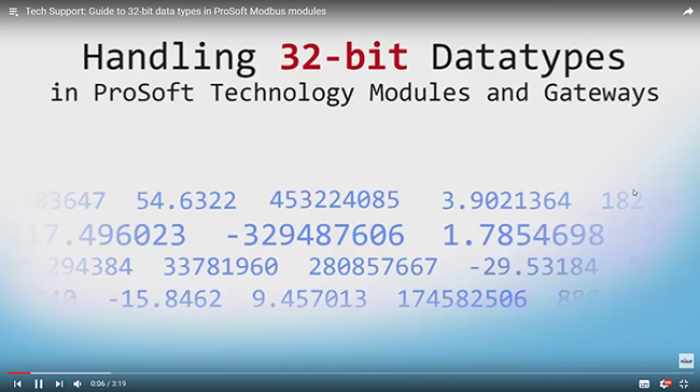ProSoft Insights / Videos
Guide to 32-bit data types in ProSoft Modbus® modules

Guide to 32-bit data types in ProSoft Modbus® modules
Wondering how to handle 32-bit data types in your ProSoft Technology Modbus® communication module? In this supplement to our training videos, you’ll find out! Since the modules’ internal memory consists of 16-bit words, you have to break the 32-bit register into two separate registers. This video takes you through that process

